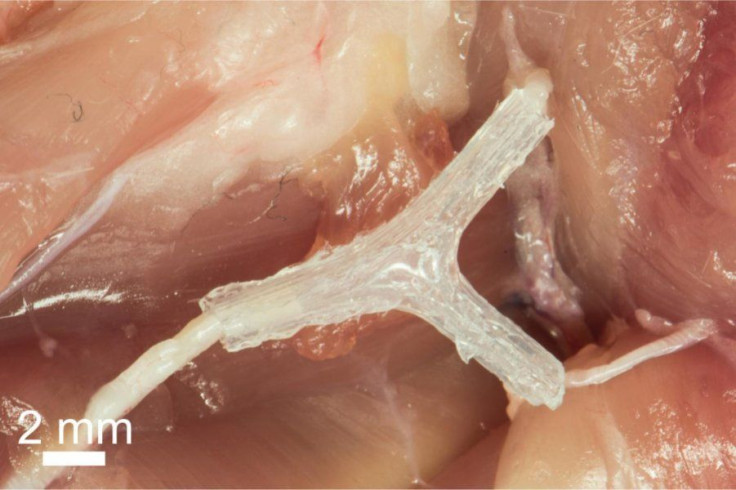One Step Closer To Wolverine: Researchers Created First-Of-Its-Kind, 3D-Printed Guide That Regrows Damaged Nerves

In comic books, superheroes like Wolverine and Deadpool have the ability to heal themselves at incredibly fast rates, making them immune to pretty much any injury. As awesome as it would be for everyone to have a regenerative ability such as this, science has yet to catch up to fiction. We are seemingly one step closer, though; collaborators from several universities have developed a first-of-its-kind, 3D-printed guide that helped regrow the sensory and motor functions of a rat’s nerves after an injury.
The new study, published in Advanced Functional Materials, showed how researchers used both 3D printing and 3D imaging techniques to create a custom silicone guide. To create the guide, the researchers first used a 3D scanner to create a template for the structure of a rat’s sciatic nerve. Then, they used a custom-built 3D printer to print the guide. Within the guide, they placed 3D-printed chemical cues that would help regenerate damaged nerves responsible for sensory and motor functions. The guide was surgically grafted to the cut ends of the rat’s sciatic nerve, and within 10 to 12 weeks, the rat’s ability to walk had greatly improved.
"This represents an important proof-of-concept of the 3D printing of custom nerve guides for the regeneration of complex nerve injuries," said University of Minnesota mechanical engineering professor Michael McAlpine, the study's lead researcher, in a press release.
The entire process of scanning and printing takes about an hour, but just like any foreign object introduced to the body, it takes a few weeks for the guide to work and regrowth to begin. This is a groundbreaking invention, as many people are affected by nerve damage from injuries or diseases, like ALS, diabetes, and cancer. It is also the first time a study has shown that a custom-made guide can be created to help with regrowth in a Y-shaped sciatic nerve that has both sensory and motor branches. "The exciting next step would be to implant these guides in humans rather than rats," McAlpine said.
McApline said that "someday we hope that we could have a 3D scanner and printer right at the hospital to create custom nerve guides right on-site to restore nerve function." Researchers, however, aren’t yet able to scan all the nerves in a person’s body. Further research will one day make this possible.
Source: McAlpine, M, et al. 3D Printed Anatomical Nerve Regeneration Pathways. Advanced Functional Materials. 2015.



























